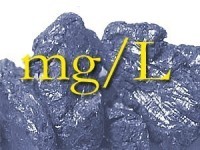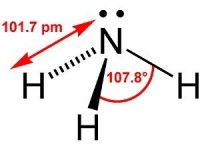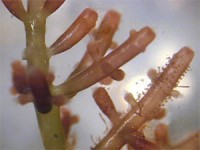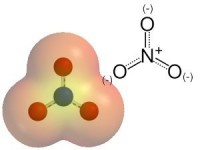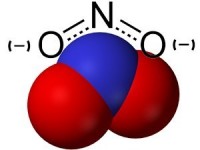Waterford Gardens 74 E. Allendale Rd. Saddle River NJ 07458908-266-6862


|
Alkalinity, often referred to as "carbonate hardness," or German carbonate hardness, is the measure of carbonate and bicarbonate concentrations in your aquarium water. Alkalinity is a measure of the ability of a solution to neutralize acid without changing the pH. It both controls and maintains water pH. Carbonate hardness is measured in degrees (dKH), parts per million of calcium carbonate (ppm CaCo3), or milligrams per liter (mg/L). Alkalinity is not the same as pH because water does not have to be strongly basic (high pH) to have high alkalinity. Alkalinity is related to the amount of dissolved calcium, magnesium, and other compounds in the water and as such, alkalinity tends to be higher in "harder" water. Alkalinity is naturally decreased over time through bacterial action which produces acidic compounds that combine with and reduce the alkalinity components. In an established pond, the ideal Alkalinity measurement should be around 100 ppm. Readings from 50 to 200 are acceptable. High alkalinity is normally prevented by routine water change outs assuming the water being replenished has a lower alkalinity than the pond water. Ponds with vinyl liners or of fiber glass construction tend to show a decrease in alkalinity over time and may need supplements to maintain an acceptable level. Raise alkalinity by adding Calcium Carbonate, concrete blocks, oyster shells, limestone, or even egg shells. Established ponds will normally maintain their equilibrium pH value if sludge and decaying organic material is routinely removed from the pond, mechanical filter, and biological converter. Scheduled water change outs (10% per week for a small pond, less for larger ponds) are also helpful.
Where does the ammonia originate from? Pond fish produce waste in the form of ammonia, which is released into the water through the gills. Ammonia can also originate from the dead and decaying plant material in the pond or from uneaten food, which is left in the water. In an established pond with a functioning filtration system the ammonia is broken down by Nitrosomonas species of bacteria to a secondary product, known as nitrite. Ammonia can exist in two forms when dissolved in water, the first is the free ammonia and this is very poisonous to fish, the second form is known as ionized ammonia which is not quite as harmful as the free form. Ammonia can have a number of detrimental effects on pond fish such as disrupting the ability to regulate water and salts, it may also damage delicate gill tissue, causing swelling of the tissue which may hinder the absorbtion of oxygen from the water. If the water becomes polluted with ammonia, regular partial water changes need to be undertaken to reduce the concentration of the pollutant. In the early stages of establishing a filtration system on the pond, it may take several weeks before the ammonia level in the water begins to drop.
Acceptable concentration 0 A gas widely used in the disinfection of water and as an oxidizing agent for organic matter, manganese, iron, and hydrogen sulfide. Chlorine is known to react with organic matter in the water to form trihalomethanes (THMs), a suspected carcinogen. Homemade Chlorine Neutralizer Make a solution consisting of 4 ounces (1/4 lb) Sodium Thiosulfate crystals (photo or technical grade) dissolved in 1 gallon of distilled or deionized water. Use 5 ml (1 teaspoon) of the solution for each 10 gallons of makeup water to neutralize up to 3.75 ppm chlorine. One cup can be used for each 500 gallons. (The entire one gallon of solution will treat about 7500 gallons of tap water.) The shelf life of the solution is about six months when stored in a cool location. The crystals will keep for several years if kept dry. NEVER use chlorinated tap water to clean your bio converter (filter) media unless you are actually trying to sterilize it. Water from the pond is a much better choice for this task.
Sometimes referred to as an algae bloom, Another factor which can influence the pH of the water is the presence of plants, most notably if there is an algae bloom in the pond. During the hours of daylight, plants produce nutrients directly from carbon dioxide dissolved in the water and the energy obtained from sunlight, a process known as photosynthesis. As a consequence of photosynthesis the plants utilize carbon dioxide in the day time and remove this from the water causing alkaline carbonates and bicarbonates to predominate in the water and the pH to rise. In the case of heavy algae blooms, the pH of the water can fluctuate quite dramatically through a 24 hour period. While many large fish can survive these fluctuations, small fish can become quite stressed by these rapid pH changes.
Nitrate, NO3-N, Nitrate is the final product from the breakdown of ammonia released by the fish. Nitrate is not especially harmful to freshwater fish but is a potent plant fertilizer and can contribute to the growth of unsightly and unwelcome algae, such as green water or blanketweed. Ideally, the levels of nitrate in the Koi pond should be controlled to help reduce the likelihood of these unwelcome algae blooms occurring. It is recommended that a Nitrate Test Kit is used to determine the quantity present in the pond and control the concentration through water changes.
As the ammonia in the water begins to reduce, the secondary break down product, nitrite will begin to increase and this is also very poisonous to fish. Nitrite is a skin irritant and will cause the fish to display symptoms of irritability such as rubbing themselves, jumping, or even skimming across the surface of the pond. These symptoms are also commonly associated with parasites and it is sensible to eliminate nitrite as the cause before treating the pond. Nitrite also has a rather sinister effect on the pond fishes blood, as it will bind very tightly with the red pigment and thereby preventing the blood cells from absorbing vital oxygen from the water. Once the nitrite has become associated with the red pigment, it turns the blood a dull brown color and hence the popular name for nitrite poisoning is "brown blood disease". A second group of micro-organisms, comprising mostly species of Nitrobacter bacteria are responsible for breaking down the nitrite into nitrate, which is the final breakdown product but in the event of high nitrite levels occurring in the pond, regular partial water changes need to be undertaken to reduce the concentration of this pollutant. Nitrite is an odorless, colorless substance and its presence can be detected using a Test Kit
The pH is in all respects a measure of acidity and alkalinity, pH 0 - 6.99 is acid; pH 7.0 is regarded as neutral and pH 7.01 - 14.0 is alkaline. On the whole the pH is not generally a problem but it can have a profound effect on the toxicity of ammonia. Alkaline water, that is with a pH of over 7.01 in combination with increasing temperatures causes more of the ammonia to exist in the free form, which is very poisonous to fish. The higher the pH and water temperature the greater percentage of the ammonia which exists in this harmful free form. If the water is alkaline it is worth bearing in mind that this will affect the toxicity of ammonia and that even very low readings could therefore be quite serious for the welfare of the pond fish. The pH of the pond is largely dependent on the pH of the make-up water in the surrounding area and therefore it is not possible to try to control this parameter artificially.
Common salt, Sodium Chloride (NaCl) is commonly used in the health care and maintenance of fishes especially Koi. Salt is useful in treating parasites. It will eliminate seven out of nine parasites that are commonly found in Koi pond.
Most fish have an internal salt concentration of 1.0% or 10 parts-per-thousand (ppt) which is higher than their water environment.
Osmosis causes water to transfer from the lower salinity of the pond water into the tissues of the fish. Adding salt will lower the osmosis pressure. This reduces the effort of the fish in eliminating the excess water. The saved energy is then available for use by the fish’s own immune system to fight diseases. However, if the salinity of the water environment is close to the internal tissues of the fish, the osmosis pressure will reverse and cause the fish to die of dehydration.
Salt concentrations between 0.3% and 0.5% (3 to 5ppt) will upset the osmotic balance of some parasites i.e. the parasites’ cells will dehydrate. Salt concentration of 0.3% are effective at detoxifying nitrite and concentration of 0.25% or higher has been used to control string algae.
Be aware that, salt can cause pond plant damage as the concentration increases. Floating plants (water hyacinth, water lettuce, etc.) are affected at lower concentrations than most bog plants.
Partial water change outs can reduce the amount of anything dissolved in the water but not totally remove it. Although it is sometimes necessary, draining and refilling a pond should only be used as a last resort! Drain some water from the pond before refilling; ideally pumped or siphoned from the dirtiest conditions from the bottom of the pond. Remove no more the 20% of the pond volume at a time; 5 to 10 percent of a pond's water per week is more in line. Larger water changes are likely to upset the biological balance of the pond. A water change out reduces the amount of a substance in the water by the same amount as the percentage of water replaced. Remember the concentrations of anything beneficial in the pond is being reduced at the same rate! It is very common for pond keepers to skip making these routine water change outs. This is not advisable as many things can build up in your pond over time and this is the only way to reduce them. Experienced pond keepers know that their fish are healthier and stronger when these water change outs are conducted.
|

